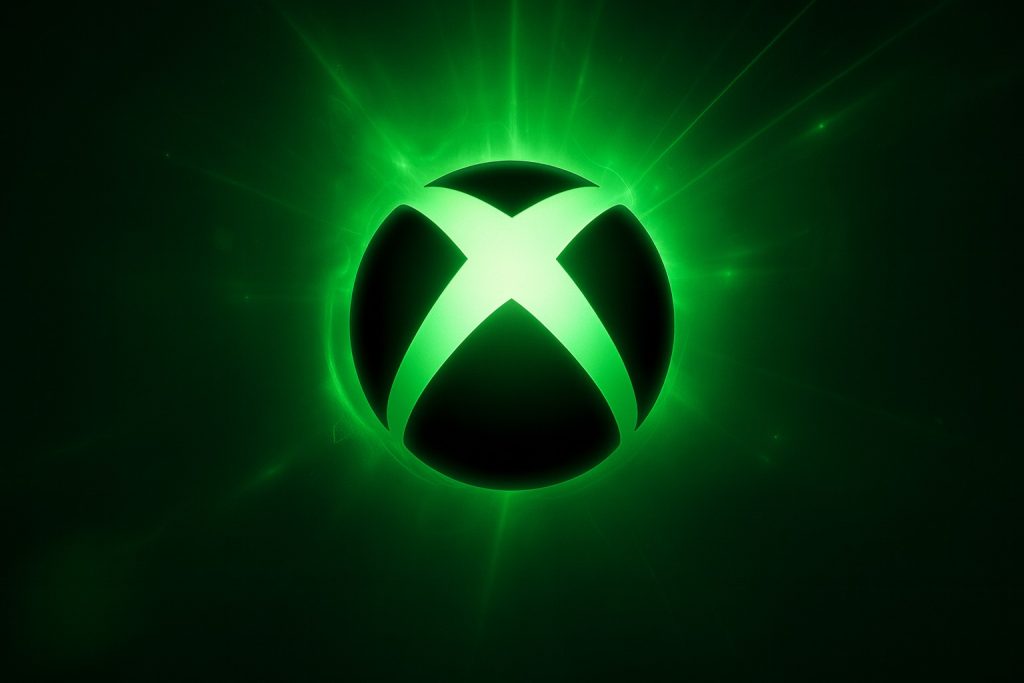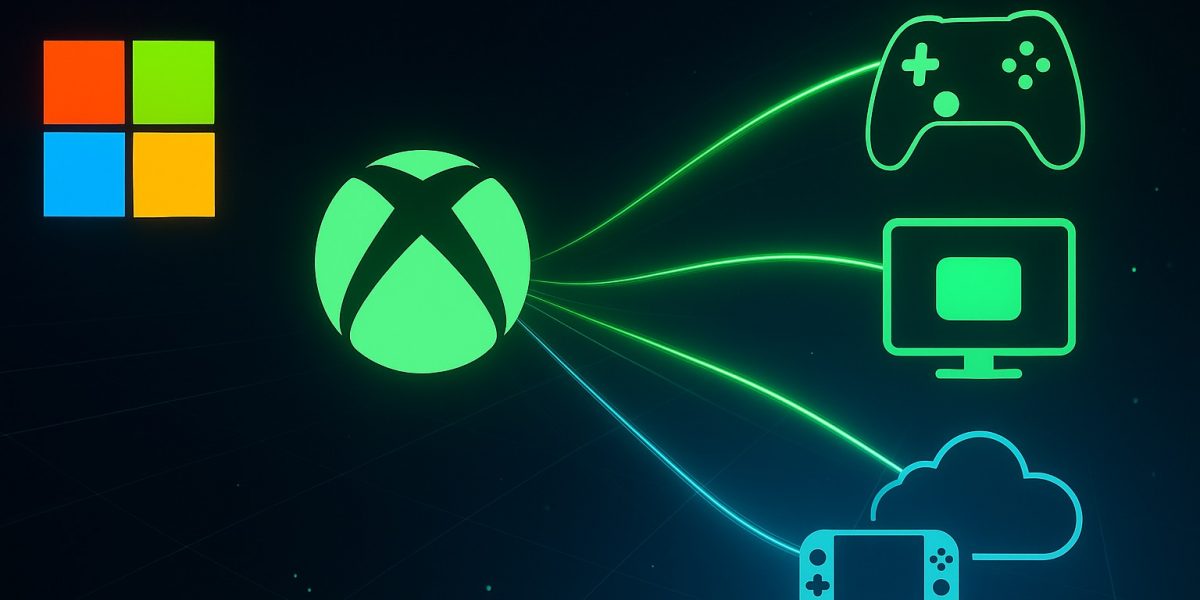Microsoft CEO Satya Nadella unveiled a bold new vision for Xbox during a Tuesday interview with TBPN, confirming the gaming division will embrace a multiplatform approach similar to Microsoft Office while simultaneously developing a next-generation console that blurs traditional boundaries between PC and console gaming.
Xbox Games Going Everywhere, Following Office’s Playbook
Speaking with TBPN hosts, Nadella emphasized that Microsoft’s gaming strategy centers on ubiquity. “We want to be a fantastic publisher, similar approach to what we’ve done with Office,” he said. “We’ll be everywhere, on every platform. We want to make sure whether it’s consoles, whether it’s PC, whether it’s mobile devices, whether it’s cloud gaming or TV, we just want to make sure games are available to gamers everywhere.”
The CEO’s comments arrive as Xbox announced several historic moves, including bringing its flagship Halo franchise to PlayStation for the first time with Halo: Combat Evolved, scheduled for PS5 release in 2026. Other major Xbox exclusives like Forza Horizon 5 and Indiana Jones and the Great Circle have also transitioned to competing platforms.
This represents a dramatic reversal from Xbox’s traditional exclusive-focused strategy. For decades, platform holders relied on exclusive games to drive console sales. Microsoft’s pivot suggests the company now sees greater long-term value in software revenue across all platforms rather than hardware ecosystem lock-in.

Next Xbox Console Plans Challenge Platform Definitions
Nadella confirmed Microsoft is developing innovative hardware that will challenge traditional distinctions between consoles and PCs. “It’s quite funny that people think of console and PC as two different things,” he explained. “We built a console because we wanted to build the best PC that could work for gaming. So I want to rethink some of those conventional wisdoms.”
According to reports, the next Xbox is expected to launch in 2027 as a premium PC-console hybrid that could sell for $1,000 to $1,500. The system will reportedly allow users to stay within the Xbox ecosystem or access other storefronts like Steam, enabling gameplay of PlayStation titles and PC games unavailable on Xbox.
This pricing positions the device well above traditional console territory, which typically stays under $500-$600. The premium approach suggests Microsoft is targeting enthusiast gamers willing to pay for flexibility and performance rather than competing directly with PlayStation and Nintendo on price.
The Steam integration proves particularly significant. By allowing access to Valve’s marketplace, Microsoft essentially acknowledges that forcing users into the Xbox Store limits appeal. Opening the platform transforms the next Xbox from a traditional walled garden into something closer to a specialized gaming PC with console convenience.
Competition Beyond Gaming Platforms
Echoing statements from Xbox leadership, Nadella stated that the gaming industry’s primary competitor isn’t other consoles but short-form video content. “The competition for the gaming industry is not other games. The competition for the gaming industry is short-form video,” he said. Xbox Game Studios head Matt Booty previously told The New York Times that Microsoft competes “more and more with everything—from TikTok to movies.”
This framing recontextualizes Xbox’s strategic challenges. If the real battle is capturing attention rather than winning platform wars, multiplatform distribution makes perfect sense. Every additional platform where Xbox games appear represents another opportunity to pull users away from TikTok, YouTube, or Netflix.
Financial Pressures Driving Strategy Changes
The strategic shift reflects broader industry pressures. Bloomberg reports that Microsoft CFO Amy Hood established a 30% profit margin target for Xbox in fall 2023. This unprecedented goal, significantly exceeding the industry average of 17-22%, led to recent layoffs, game cancellations, and Xbox Game Pass price increases.
The 30% margin target explains many recent Xbox decisions that seemed puzzling in isolation. Layoffs across gaming studios, cancellation of projects, Game Pass price hikes, and multiplatform expansion all contribute to improving profitability margins that Hood apparently deemed insufficient.
Traditional console business models operate on relatively thin margins. Hardware often sells at or near cost, with profits coming from software sales, subscriptions, and licensing fees. Achieving 30% margins in this context requires either dramatically reducing costs or substantially increasing revenue—or both simultaneously.
What Multiplatform Means for Xbox Identity
The multiplatform pivot raises questions about what “Xbox” means going forward. If Xbox games run on PlayStation, Nintendo, and PC outside Xbox’s control, does Xbox remain a hardware platform or transform primarily into a publisher and services brand?
Microsoft seems to be betting that Xbox’s identity can transition from “the box under your TV” to “where you play games from Microsoft.” Game Pass becomes the core product rather than the console itself. The next Xbox hardware serves customers who want premium Microsoft-controlled experiences, while software distribution reaches everyone else.
This mirrors exactly how Office evolved. Microsoft initially tied Office tightly to Windows, but eventually concluded that Office on Mac, iOS, and Android made more business sense than trying to force Office users onto Windows devices. Xbox appears to be following the identical playbook.
Industry Implications and Competitive Response
Microsoft’s strategy shift could reshape the entire gaming industry. If the approach succeeds financially, Sony and Nintendo may face pressure to similarly expand beyond their hardware ecosystems. However, both companies remain more dependent on hardware sales than Microsoft, making wholesale strategic pivots more difficult.
Sony has tentatively explored PC releases for PlayStation exclusives, typically waiting years after initial console launches. Microsoft’s aggressive multiplatform approach, including day-and-date releases across Xbox and PC with same-day Game Pass availability, goes far beyond Sony’s careful experiments.
Whether this strategy successfully achieves Hood’s 30% profit margin targets while maintaining Xbox’s relevance in gaming remains uncertain. The 2027 console launch and ongoing multiplatform expansion over the next few years will test whether Microsoft can have it both ways—maintaining a premium hardware business while maximizing software reach across competing platforms.




Post a comment